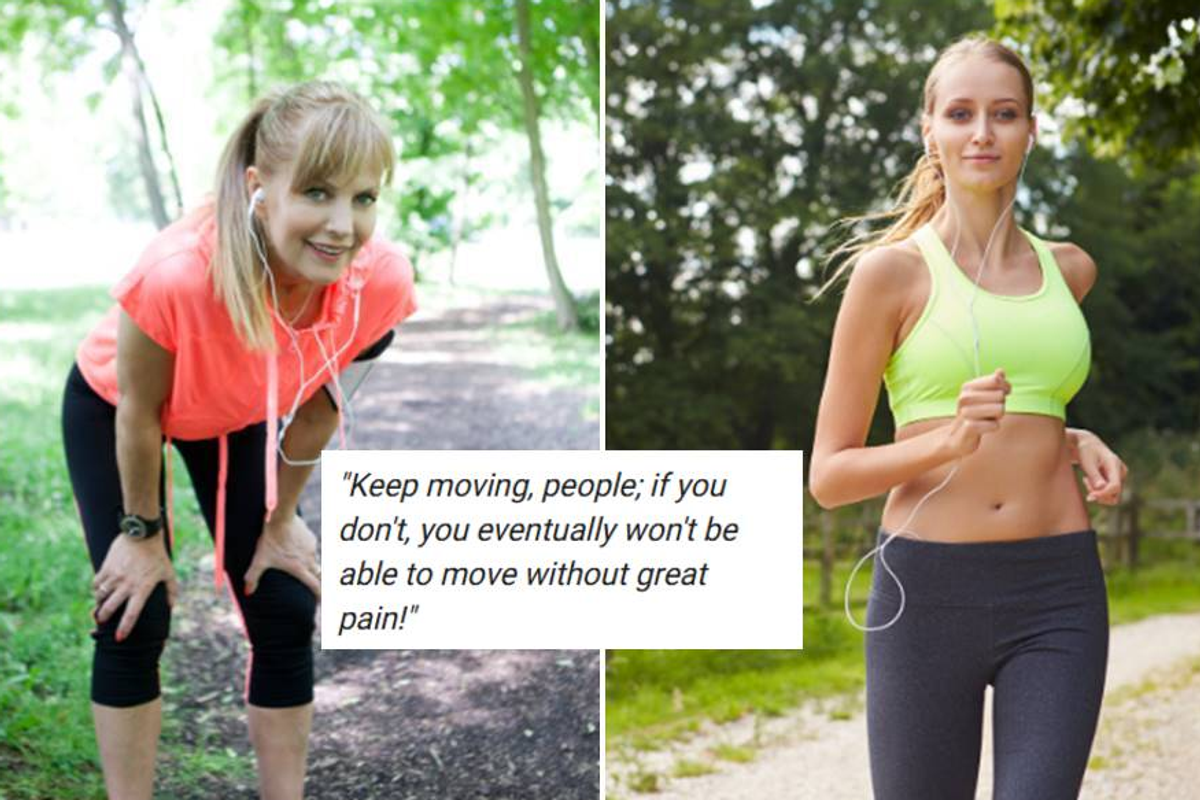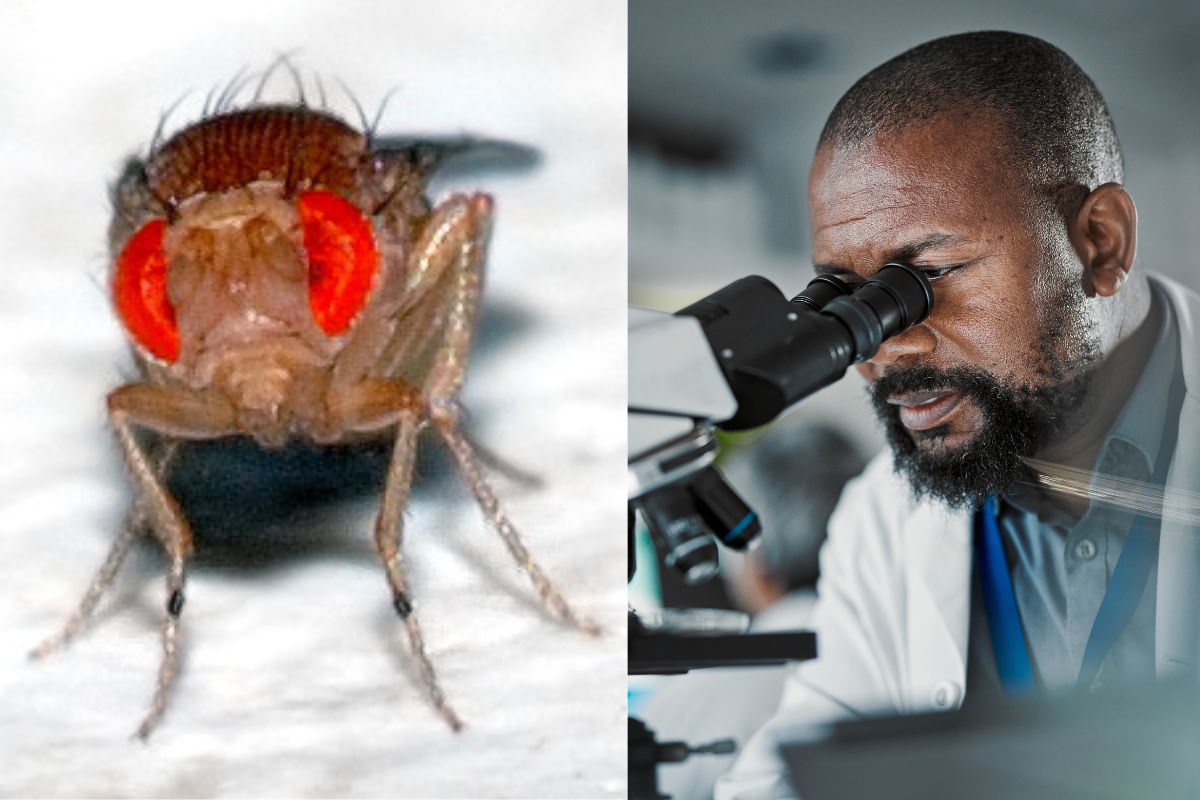Gen Zers asked Gen Xers to share the things they don't realize will affect their life
Here are 14 things that people in their 20s should seriously consider.

A woman in her 40s and one in her 20s staying fit.
When you’re in your 20s, you feel indestructible. You’re hip, healthy, and look good and there’s no way you’ll fall for the pitfalls that plague people as they age, whether it’s poor health, bad financial decisions, or deteriorating personal relationships.
Well, once most people reach 40, the idea that they’re indestructible has fallen by the wayside. You realize that you’re not perfect and are subject to the whims of Father Time, just like everyone else. At this point in life, you look back and think of everything you could have done to set yourself up for your second act. You start to consider whether you put enough effort into saving money, building friendships and working out.
The chasm between how we see life in our 20s versus 40s is the crux of an interesting conversation on Reddt’s AskReddit subforum. A user asked people in their 40s (younger Gen Xers and older Millennials) to help Gen Z by sharing the things people in their 20s don’t realize will affect them later in life.
Gen Xers are good people to for advice these days because they have recently entered a unique “sandwich generation” phase, where many are both caretakers for their elderly parents and their younger children. This gives them a better understanding of how your choices when you're younger affect you in old age. They also understand their children's fast-paced, tech-enabled world, many of whom are in their teens.
Gen Zers, on the other hand, are ages 12 to 27 and in the prime of their youth. So they’re either focused on becoming self-reliant adults or enjoying life as teenagers.
Here are 14 of the best answers to the question posed to people in their 40s: What do people in their 20s not realize will affect them later in life?
1. Be concerned about your parents' health
"What's really going to affect you is your parents' health, presuming they're still alive and you have a good relationship with them. If your parents live into old age, they will need more and more help. They won't understand how things work. They'll be more susceptible to scams. If they're like mine, they'll be stubborn and won't acknowledge their weakening faculties. Try getting someone who's driven for 60 years to surrender their license because their eyes aren't so good. And when one dies, the other will likely have fallen into a very co-dependent lifestyle, and the structure is completely destroyed. You know it's going to happen, but you don't realize how it'll manifest itself until it plays out."
2. Keep moving
"Don't stop moving. I started working from home in my mid-30s. I went from walking back and forth in the office from the printer to my desk 100 times a day, to not moving. I have major issues now, 14 years later. Part of those are caused by not moving! Get up and take a walk, dance, ride a bike, swim.
"Keep moving people, if you don't, you eventually won't be able to move without great pain!"
3. Protect your hearing
"Wear ear protection at concerts, dammit!"
"Wear ear protection AT WORK. I’m left-handed and almost completely deaf in my left ear from working on diesel engines most of my life. I’m 37."
"Wear some freaking sunscreen. Skin cancer sucks!"
7. Understand compounding interest
A great way to learn how the money you save today can be extremely valuable when you reach retirement age is to play around with this compound interest calculator. It may not seem like much, but 6% annual interest, compounded over a few decades, can turn into a lot of money.
8. Physical jobs are hard on your body
"That physical job is not paying you for the damage it does to your body. I did flooring for 18 years before I got out of it. I was a subcontractor and made great money. Until I realized that it wasn't enough to fix my joints. I have shoulder problems from carrying rolls of carpet and pad up endless flights of stairs. I was lucky and somehow my knees are ok."
9. Stretch younglings, stretch
"I’m a 27F who has been working from home since 2020. I never exercised or stretched until about a month ago, when I fully committed to a home workout routine. When I first tried to reach for my feet, I could barely bend far enough for my fingertips to touch my knees—it was painful! Thanks to daily stretches, I can almost reach my toes without discomfort. Progress! I’m getting there."
"Avoid sticking with a person you are never going to change. Worst mistake ever."
12. Get rid of the negative energy in your life
13. The bricks can bring you down
14. Put effort into relationships
- Gen X advice for Gen Z: Woman shares the things she wishes 'somebody told me in my twenties’ ›
- People born between Gen X and millennials are humorously demanding recognition ›
- Millennial sends tongue-in-cheek warning to Gen Z after viral video criticizing Gen X ›
- My Gen Z kids had a surprising reaction to 'Dead Poets Society' - Upworthy ›








 Worried mother and children during the Great Depression era. Photo by Dorthea Lange via Library of Congress
Worried mother and children during the Great Depression era. Photo by Dorthea Lange via Library of Congress  A mother reflects with her children during the Great Depression. Photo by Dorthea Lange via Library of Congress
A mother reflects with her children during the Great Depression. Photo by Dorthea Lange via Library of Congress  Families on the move suffered enormous hardships during The Great Depression.Photo by Dorthea Lange via Library of Congress
Families on the move suffered enormous hardships during The Great Depression.Photo by Dorthea Lange via Library of Congress



 Dark flies and wild fruit flies look almost identical, but have significant genetic differences. Photo by
Dark flies and wild fruit flies look almost identical, but have significant genetic differences. Photo by  The project has been passed down from researcher to researcher for 70 years. Photo by
The project has been passed down from researcher to researcher for 70 years. Photo by